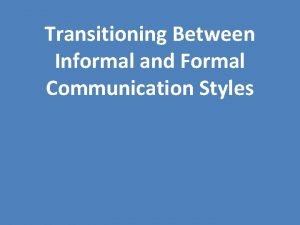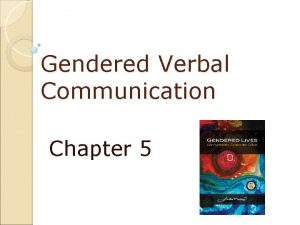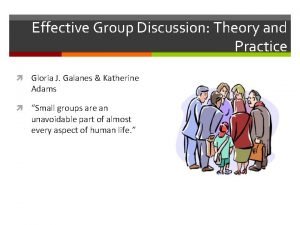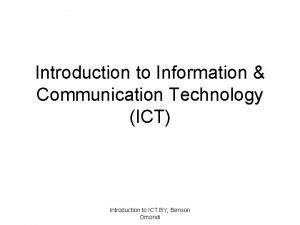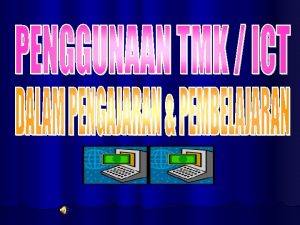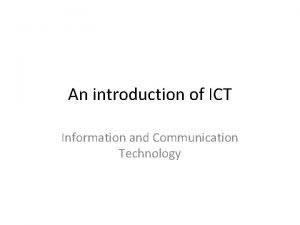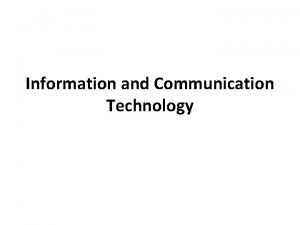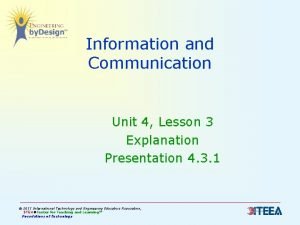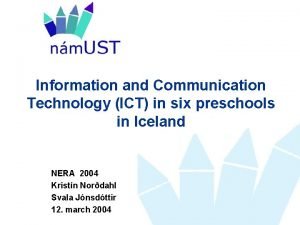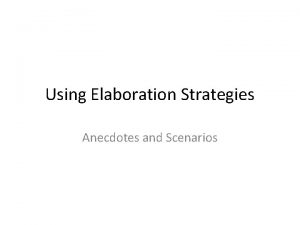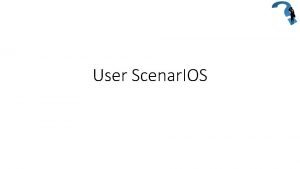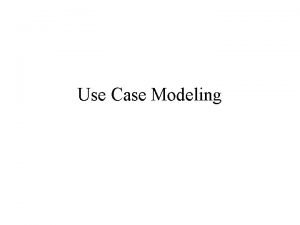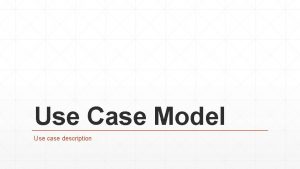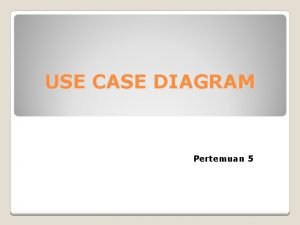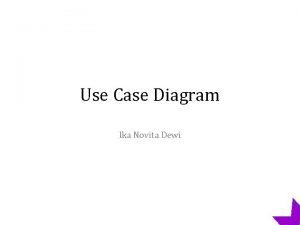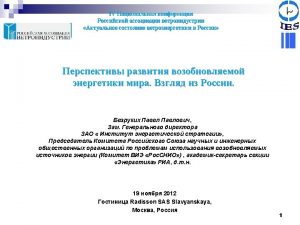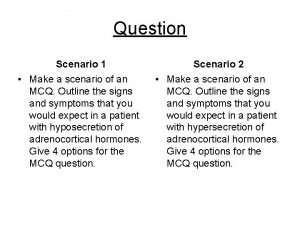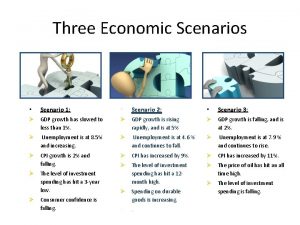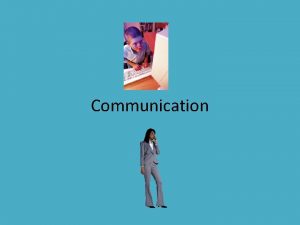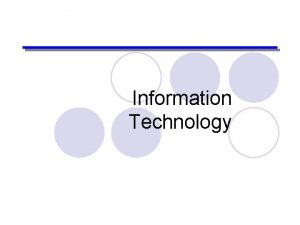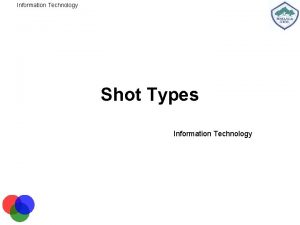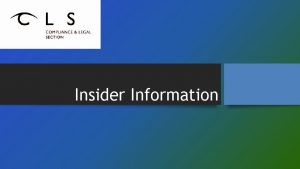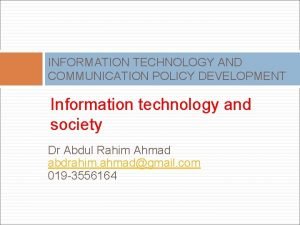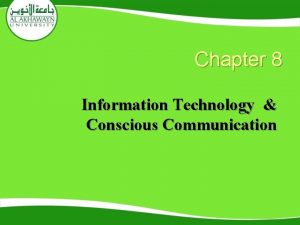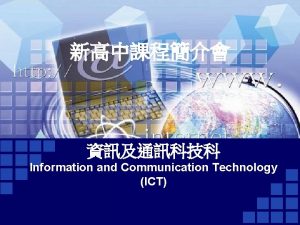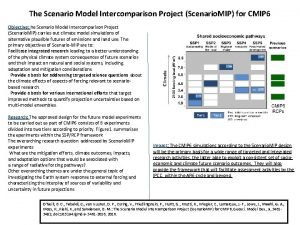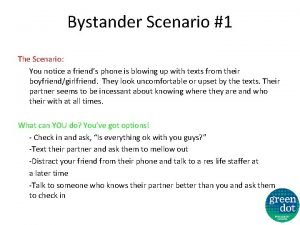Communication Information Communication Technology IT defines a scenario



















- Slides: 19

Communication

Information ‘Communication’ Technology • IT defines a scenario that uses computers, networking, software programming, and other equipment and processes to store, process, retrieve, transmit, and protect information. • Buchanan and Huczynski (2004, p. 181) define the communication process as: ‘the transmission of information, and the exchange of meaning, between at least two people’. • ICT could be defined as the storage and transmission of information using Computer technology.

Question Write down: 1. Why do people in the workplace need to communicate?

Why do people in the workplace need to communicate? People need to communicate to e. g. • Share information, collaborate and organise tasks; • Inform, remind and clarify policies & procedures; • Explain changes in procedures; • Report results e. g. sales; • Organise overtime to cover absence; • Describe and share new ideas/innovations/research; • Motivate e. g. give positive feedback to teams/employees; • And many more. . .

Why is effective communication important? • Vast majority of problems in business are caused by ineffective communication in one form or another. • Without speedy, accurate and meaningful communication, people in an organisation may not be able to do their jobs well. • Organisations need to communicate with internal employees and external stakeholders such as customers, suppliers and investors. • Good communications is very important within organisations and of great value. • Information Technology allows for effective communication within organisations.

Communication has four main functions (Scott and Mitchell, 1976): • Information - people require information to make decisions. • Organisation - workers need to know what tasks to do whilst at work and require information and guidelines. • Motivation - people require clarification on tasks, then feedback on performance; • Emotional expression - people must be able to express their emotions, in an informal way.

Question How many different types of communication can you think of that can be used within an organisation?

A disadvantage of verbal communication – ‘Chinese whispers’ The soldiers at the front line needed to get a message to their company commander; the only means available was word of mouth. The message was passed from man to man in the trenches across a long distance. It finally reached the company commander, who was baffled by the request: ‘Send three and fourpence, we’re going to a dance. ’ So bemused was he, that he mounted his horse & set off to find the source of the message. On arriving at the front line, he was greeted by the sergeant with, ‘Are you the only one Sir? ’ ‘Only one of what? ’ he replied. The sergeant shook his head in disbelief, ‘We asked for reinforcements, we’re going to advance. ’

Activity: Chinese Whispers • Student 1: Write down a message e. g. Couple of sentences. • Give the message to your tutor. • Tell the person sitting next to you the message, on so on until it reaches the last person at the back of the room. • The last student to receive this message should write the message down and pass it to the tutor.

Match the message to the medium The choice of medium depends on the following: • Urgency: you wouldn’t send for the fire brigade by letter • Permanency: you may need a record of the information, e. g. graduation cert. , contract of employment • Complexity: detailed information is too complex and lengthy to send over the phone, e. g. blueprints • Sensitivity: you wouldn’t post strategic marketing plans over the internet • Number of people to be reached: no need to take out a newspaper ad to inform one or two people! • Cost: e-mail is cheaper than snail mail

Activity: Quicktivity You are the marketing manager for a major retailer. You wish to tell your customers of an amazing offer. What media could you use? You wouldn’t use the same media if you wished to warn your customers of a wet floor in your store.

Channels of communication • Formal communications follow the normal channels of authority: – a two-way downward and upward flow of information (vertical channels) – communication also travels between people at the same level or status (horizontal or lateral channels) – communication with a member of a different department at a higher or lower level in the hierarchy is known as (diagonal channels) • Informal channels - channels not formally recognised is known as the grapevine, passing on gossip and rumour, however organisations are now allowing and using such methods in a more inclusive, equal and beneficial way such as internal Social Networks. Also, external networks/forums with customers.

The means of communication within an organisation is affected by its structure: • Large, bureaucratic, ‘tall’ organisations have very formal vertical channels. If there are many links in the communication chain, there is a greater risk of distortion (noise). • In smaller organisations with simple, flatter structures, the boss is likely to know all employees individually so communication is less formal, more direct and accurate.

Overcoming communication problems: Communication problems can be over-come by: • Creating a corporate communications policy, clear procedures stating who to talk too about various issues; • office design and layout e. g. Open office with cabins rather than closed office rooms; • ‘open-door’ policy; • the introduction of ‘project-teams’ or ‘committees’ that cut across functional departments.

Types of communication networks (Mullins, 2007) • • chain circle wheel all-channel

Communication networks - chain • A chain network - a relatively centralised network in which individuals communicate only with their chain neighbours; • A circle network - is a variant of the chain e. g. between people at the same level; • A wheel network - a centralised communication network which includes a link person through which all information must travel e. g. Head of dept. E. g. Marketing Manager and sales reps or Head of Personnel and Personnel officers, or Supervisor or Team Leader and production staff. • An all-channel network - a decentralised network in which all members of the group can freely communicate with other members e. g. Brainstorming sessions or a school such as School of Applied computing (all channel + wheel).

Which network is best? • There is no one best network, it must be the right network for the right job. For example: – If the purpose is to motivate staff, participation via an all-channel network is best; – If power and control are important, centralised networks are best suited, e. g. the army restricts information - a ‘need to know basis’; – Other criteria - see table overleaf.

Communications networks and task complexity Simple tasks Complex tasks Centralised Networks • Information flows to a central person • Central person can perform task alone • Good performance Centralised networks o Information flows to a central person o Central person becomes saturated o Poor performance Decentralised networks • Information flows all around the network • No one person has all the required information • Poor performance o Centralised networks are superior for simple tasks o o Decentralised networks Information flows all around the network No one person becomes saturated Good performance Decentralised networks are superior for complex tasks

Student activity • You are unhappy about a mark you receive for an assignment. • Write down the person who you are likely to talk to about this? • Write down the person you should talk to about it? • Note the direction of communication flow occurring in each case.
 Disaster scenario media and information literacy
Disaster scenario media and information literacy Scenario of formal communication
Scenario of formal communication What thing defines women in gendered verbal communication?
What thing defines women in gendered verbal communication? Effective group discussion theory and practice
Effective group discussion theory and practice Conclusion of communication technology
Conclusion of communication technology Introduction of ict
Introduction of ict Apa itu information technology
Apa itu information technology Australian curriculum ict
Australian curriculum ict Introduction to ict
Introduction to ict What is ict means
What is ict means Components of information and communication technology
Components of information and communication technology Definition information and communication technology
Definition information and communication technology Shsm ict
Shsm ict Real world example of piecewise function
Real world example of piecewise function Anecdote sentence
Anecdote sentence User scenario example
User scenario example What is a use case scenario
What is a use case scenario What is use case description
What is use case description Contoh use case scenario
Contoh use case scenario Contoh use case scenario
Contoh use case scenario

